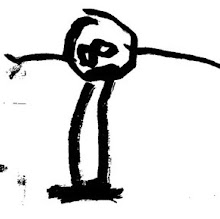Yeah, so you're wondering where the name "Das Internationale Elektron" comes from, aren't you? You weren't. Well, now you are. Listen up, here's a story 'bout a man named Jed... sorry, wrong story.
Okay, so there is this group from Vienna that I know next to nothing about, except they are called "Mäuse" and they had an album called Teen-Riot Günther-Strackture. The album is pretty fucking awesome, and nobody has ever heard of it. I have no idea why Sepp and Niccy (friends in Austria, perhaps reading this blog, but I doubt it, so they can't answer) knew about or gave me the CD about a decade ago. They did. I loved it. The music is whimsical, distorted, stupid, hysterical, and meaningful. It's hard to explain how that can be, and I can't play it for you, so there. Trust me. Track 10 is a song called "Das Internationale Elektron." It's a dubby kind of electronic DIY thing, tripping over itself as it flows along.
Now, when I heard that, I was amused by the joke of it all. Electrons are fermions, they obey Fermi-Dirac statistics, meaning they can't all be in the same quantum state at once. (Bosons, obeying Bose-Einstein stats, can, which is why identical photons can all heap onto the same place, making bright spots). So to say something is an international electron, well, that's just funny. I mean, that international traveler, that electron. But you still need a nation (quantum state), because you can't be like any other electron. We're all individuals! But are international electrons? What does it even mean?
One more thing about electrons - they are indistinguishable. One electron is just like another (except its quantum state, but that can be manipulated). So, again, what does it mean to have an international electron?
The show name was perfect for a physicist doing a show based on international music of all sorts. I don't play that anymore, but still feel that I live up to the dilemmas in the name. Postminimalism as a genre, seemingly identical pieces used to construct the pieces, but always somehow different (Riley's In C is always different, even when the 53 musical leptons remain the same). I can't explain it. But it still makes sense.
Plus, now you know just a little more about the dorky mental connections I make when listening to music. Perhaps a future entry will go into postminimalism as punk music, the connections between Sonic Youth and feedback and John Luther Adams, and so on. Who knows when.
Tuesday, January 6, 2009
Subscribe to:
Posts (Atom)




